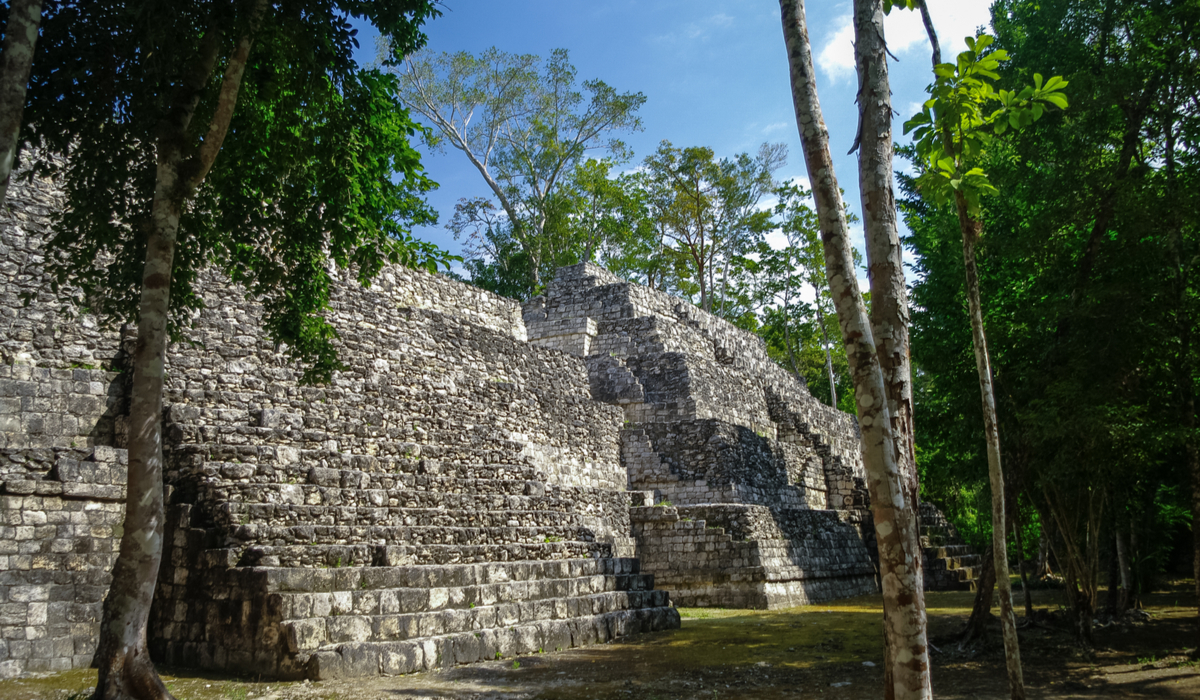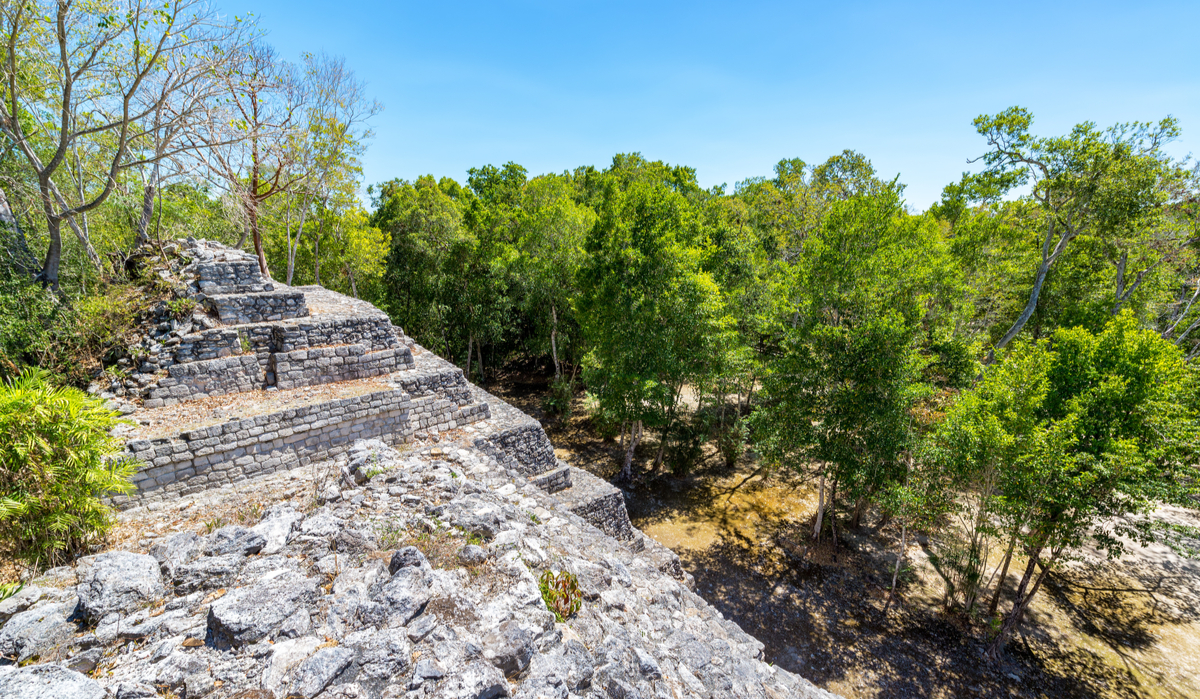Another Fabulous Mayan Ruin in Campeche With An Incredible Stucco Frieze
Balamkú, located just a few miles from Calakmul in the state of Campeche, has the largest surviving stucco frieze found at any of the excavated Mayan settlements. The Four Kings Frieze is protected from the sun and inclement weather in the House of the Jaguar. Dating back to 550 to 650 AD, the symbolism and artistry found in these four friezes is worth the drive and the experience at Balamkú.
Are we ever glad Florentino García Cruz, an archaeologist for the Campeche Regional Center of INAH, stumbled upon this small but exquisite Mayan ruin in the state of Campeche. Located close to the Calakmul ruins, this is one archaeological site you will not want to miss.
This is one of many Mayan Ruins located on Hwy 186 between Chetumal and Escarcega within close proximity to Calakmul. Balamkú is a small ruin site with big rewards. We find this site is best visited when you first arrive in the Campeche area. This is exactly what we did when we visited this ruin site and it was the perfect end to the 8 hour drive from the Riviera Maya. Balamkú is just off the highway, making this an easy ruin to access. The entrance does not require a long drive off highway 186. like other ruins sites on this route.
Three Areas to Visit Within Balamkú
We are going to cut to the chase. There are three groups of buildings in Balamkú. Head straight to the Central Group when you first arrive. This Group is furthest from the entrance, but it is here that you will want to spend most of your time. When you are done in the Central Group, stroll back through the Southern Group and have a peek at the Northern Group, an area that has been mapped but not excavated.

Central Group and the Temple of the Jaguar
The Temple of the Jaguar is the location of the largest surviving stucco frieze in the Maya world, the Four Kings. The frieze is a 16.8m/55ft long painted stucco frieze dating from AD 550–650. This incredible discovery is located inside the Temple and is guarded by security personnel all day long. This is why you need to high tale it to the Central Group if you arrive in the afternoon. The security guard will lock up the temple at 4 pm -ish if no one is seen on the site. When we arrived at 4 pm to the ruins, the security guard had left his post, but saw us leaving the Southern Group so walked with us back to the Temple of the Jaguar to ensure we saw the best part of the ruins. Now that is service!
Each king in the frieze represents two distinct areas of Mayan beliefs; current life (earth) and the underworld. The symbols reflect each of these sacred locations. The detail, the symbolic story told in each frieze, could have you mesmerized for hours. The friezes are so well preserved it is easy to take a step back in time and start to understand what the Maya were trying to explain or what they thought.
Note about the friezes: The entrance is to the left of the building, with a iron staircase leading up the side of the temple. Taking photos is extraordinarily difficult as the interior has little wiggle room to capture an entire frieze in a photo. Flash photography is also forbidden. Take it all in when you are there and do your best to capture your experience in bite-sized images.
South Group at Balamkú
If you ever finish at the Central Group, (admittedly we did not want to leave that area) head over to the Southern Group which is comprised of 4 small plazas. There area few buildings in each plaza to view. This is not a large area and you will not find any other friezes in this group. What you will further understand is the complexity of this location that was first settled around 300 B.C.
Northern Group at Balamkú
The Northern Group has not been excavated but if it is open to the public, it is a nice walk around. There is something mystical and interesting when viewing Mayan ruins in their unexcavated state. Imagining the task ahead for archaeologists and how them put each puzzle together is incredible.
- The site was occupied as early at 300 BC
- Most of the important buildings date from 300 to 600 AD
- The Four Kings frieze were created 550–650 AD
- City was abandoned between 800 to 1000 AD
- Site discovered in 1990
- Site excavation started in 1994 to 1998

Why We Love Balamkú
Besides the great drive to this ruin site from either the northwest of the northeast, the Four Kings frieze located in the Temple of the Jaguar takes the cake. This beautifully preserved frieze is the only reason, and an excellent reason, to visit Balamkú Ruins.
Getting to Balamkú Ruins
Balamkú is located in the state of Campeche 5 kms/3 miles from the highway entrance into the Calakmul Ruins on Hwy 186. The ruin entrance is 3 kms/1.8 miles from the highway. You can access Hwy 186 from either the City of Campeche (Hwy 180 to Hwy 186) or from the Riviera Maya and Costa Maya (Hwy 307 to Hwy 186)
This is an overnight visit if you are traveling from the Riviera Maya. Tulum is 390km / 210 miles to the site, Playa del Carmen is 450 km / 240 miles from Balamkú. In the Costa Maya Bacalar is 175 km / 95 miles, Mahahual is 270 km/170 miles from the Balamkú site. Make sure you fill up with gas in Xpuhil or Escarcega as these are the last areas with gas stations.
